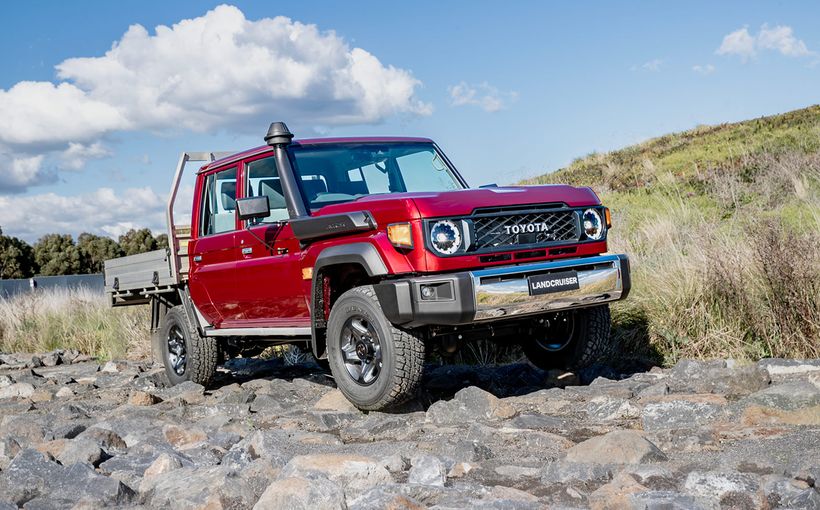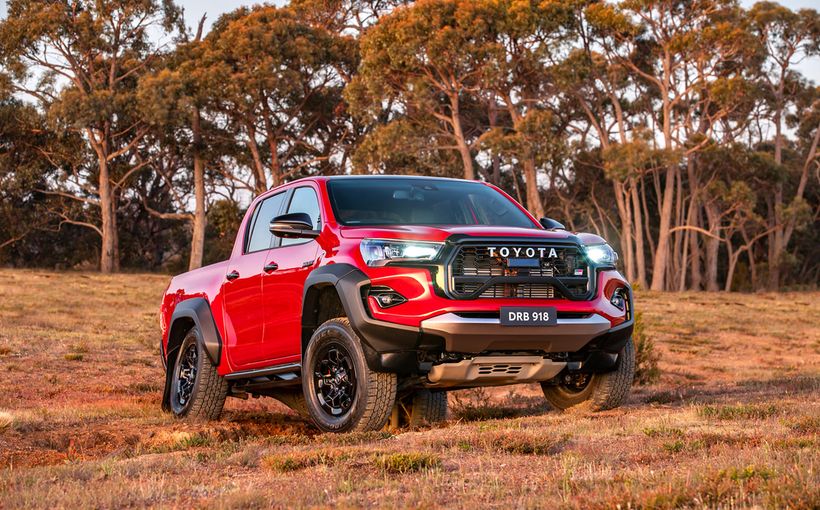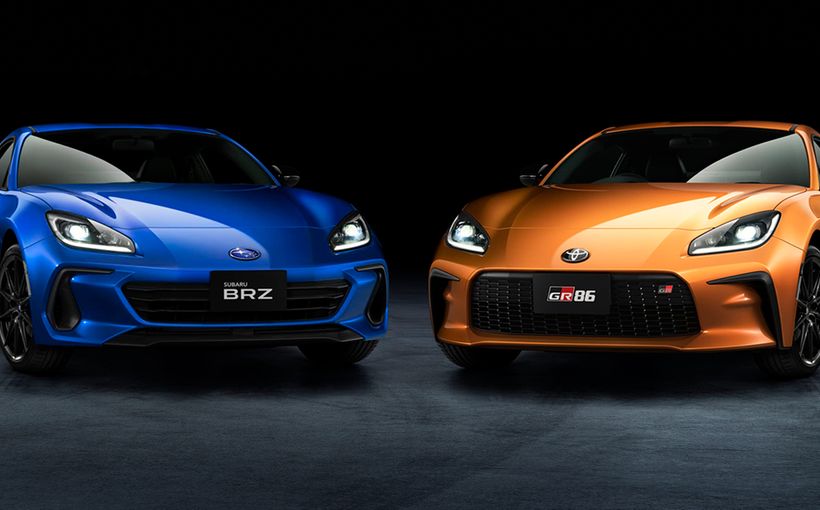Toyota Supra: Showroom Racing Great. Group A Heavy Weight.

The Toyota Supra could well have been a front runner in international Group A touring car racing in the 1980s had Toyota backed it with the same unwavering commitment to winning shown by Jaguar, Ford, BMW and Nissan. Sadly, the big six cylinder Japanese coupe was always out of step with the constantly evolving rules which ensured it never realised its true potential.
The Supra breed was born in 1978 with the Celica-inspired A40 series and continued through three generations (A60/A70/A80) until production ceased in 1992. During that time the second (A60) and third (A70) generation Supras, which were available in the Australian market, struggled with uncompetitive power-to-weight ratios in Group A. Local Supra campaigners included Peter ‘Racecam’ Williamson, John Smith and Garry Willmington.
However, the third generation A70 Supra did enjoy great success in Australian production car racing, at both national championship level and in the 12 hour production car race at Bathurst. Clearly it was a car of stark contrasts in motor sport.

The MA61 Supra (1982-1986)
The first Group A contenders emerged with the second generation Celica Supra MA61 (the 'M' prefix denotes Toyota's premium performance engine family). Its release in 1982 occurred in the same year that world motor sport governing body, the FIA, adopted new Group A rules as its international touring car formula.
In the early days, when turbocharging of touring cars was still in its infancy and power outputs were moderate, an equivalency factor of 1.4 (engine cubic capacity x 1.4 = total capacity) applied to turbocharged engines provided a fairly even playing field with naturally aspirated ones.
Even so, the early pacesetters were non-turbocharged cars with large capacity engines including TWR’s famous Jaguar XJ-S coupes armed with howling 5.3 litre V12s and BMW’s 635 CSi coupes with superbly refined 3.5 litre inline sixes.
The new Supra MA61 presented a potential Japanese challenge to the British and German thoroughbreds. Armed with Toyota’s 5M-GE 2.8 litre DOHC 12-valve fuel injected inline six, it produced 178bhp (133kW) and 212 ft/lbs (281Nm) in standard trim. Its key external dimensions were closer to the BMW than the Jaguar, with a 2614mm wheelbase and a kerb weight of 1361kg.

The Group A rules were structured in such a way as to provide a variety of global marques with close competition. In its original form this sliding scale matched a car’s cubic engine capacity (cc) with a maximum fuel tank size (litres), tyre width (inches) and minimum weight (kg).
As a result, the Supra found itself in the 2501-3000cc division which allowed a maximum tyre width of 10 inches and low 1035kg minimum weight. This compared pretty favourably with the benchmark BMW on the next rung up the ladder (3001-3500cc) which allowed an 11-inch tyre but with a heavier minimum weight of 1110kg.
This positioned the Supra as a potential outright contender, if it could be built down to or close to the 1035kg minimum weight and competitive power could be coaxed from its silky smooth 2.8 litre inline six.

Peter Williamson’s MA61 Celica Supra Group A
This is where Willo’s car enters the picture, as it was the first of three MA61s built by Team Toyota Great Britain for the British Saloon Car Championship. Reigning champion Win Percy and others raced the car in 1983-84 with a best result of fourth place. Despite its promise on paper, the Supra could not match the dominant TWR-prepared V8 Rover SD1 3500s.
It was then prepared for the 1984 Spa 24 Hour race in Belgium where the UK’s Gordon Spice teamed with the Martin brothers from Belgium to qualify ninth out of 53 starters and finish fifth outright. Qualifying in the top ten and finishing in the top five in the world’s toughest touring car race showed the car’s strengths in endurance racing.
Meanwhile, the Confederation of Australian Motor Sport had announced that local touring car racing would also be switching from our home-grown Group C rules to Group A in 1985. This presented a good opportunity for Williamson to get back into touring car racing - this time as a potential outright contender - after destroying his 2.0 litre Celica in 1981.

In mid-1984 Williamson bought the Supra from TTGB and had it shipped to Australia direct from Belgium. Not surprisingly, he was disappointed with the car’s condition when it arrived as it hadn’t been touched since completing 24 grimy hours at Spa.
His team gave it a quick strip-down and rebuild in time for the first Group A touring car race to be held in Australia, the 1984 Sandown 500, which was a combined field of Group C and Group A cars to give local race fans their first glimpse of the new breed of tin-tops coming in 1985.
The Supra, co-driven by Mike Quinn, won the Group A class and finished sixth outright. This created momentum for the team at Mount Panorama for the Bathurst 1000. Unfortunately, Williamson got entangled in the multi-car wreck triggered by Tom Walkinshaw’s Jaguar being stranded on the starting grid, which left the Supra heavily damaged and out of the race.

The car was repaired and rebuilt for the 1985 season with numerous improvements, including a useful gain in engine power with about 285bhp being squeezed from the 2.8 litre inline six. It was also repainted in the eye-catching bright orange livery of Willo’s last Celica Group C tourer.
The Supra enjoyed more 3.0 litre class success with a best result of first in class and third outright at the Sandown 400 with co-driver Tomas Mezera, beaten only by the two factory-backed JPS BMWs. Bathurst was another disappointment, though, retiring after only 32 laps with fuel injection problems.
From mid-1986 it was permitted to run with homologated wheel arch flares, new Aussie-made Simmons three-piece wheels with a wider off-set plus lightweight suspension components. Group A’s restrictions on camshaft lift were also relaxed and a new plenum chamber for the inlet manifold resulted in more gains.

However, by then the prolific power increases of turbocharged engines were making naturally aspirated cars like the Supra increasingly uncompetitive. Volvo’s victory in the 1985 European Touring Car Championship with its 240 Turbo opened the floodgates in 1986, with Nissan proving instantly competitive in Australia with its new 2.0 litre turbocharged DR30 Skyline coupe.
Even so, Williamson scored more points in the 1986 ATCC before signing young rookie Mark Skaife as co-driver for Sandown and Bathurst. After the pair finished first in class and 10th outright at the Sandown 500, the Supra’s Bathurst curse struck again during practice when the car became airborne at about 250km/h over the final hump on the original Conrod Straight. The Supra hit the earth bank under the Dunlop Bridge with massive force, virtually destroying the car and leaving Williamson with some nasty but non-life threatening injuries.
To get the Supra back on track Williamson purchased another body shell from Queensland driver Malcolm Rae, who had started construction of an MA61 but not completed the build. Williamson rebuilt his car using a mixture of both body-shells plus any mechanical components that could salvaged from the Bathurst wreck. It featured a number of refinements and was painted white with red highlights.
Willo’s Supra only race four times in 1987. It was then sold to a Kiwi buyer who raced it in NZ before it returned to Australia in 1989. It sat unused for many years before being rescued by John Abbott who restored the car to its pre-1986 Bathurst specifications.

The MA70 Supra (1986-1992)
The MA61 was followed by the third generation MA70 in 1986. It rode on a slightly shorter 2596mm wheelbase, but was 25mm wider with a hefty kerb weight of 1537kg that was a substantial 176kg heavier.
There were two homologations for the MA70 in Group A. The first was rubber-stamped in May 1987 as a naturally aspirated model, based on the showroom version with the larger 3.0 litre 7M-GE DOHC inline six producing 200bhp (149kW) and 196 ft/lbs (265Nm of torque).
A second homologation followed in July 1987 for the first turbocharged version, powered by the similar 7M-GTE 3.0 litre inline six which produced 232bhp (173kW) and 250 ft/lbs (325Nm) of torque in showroom trim. An extension to this homologation was granted for the limited-build Turbo A model which followed in August 1988.

This presented an interesting choice for race teams. If they opted for the naturally aspirated (N/A) version, its 2954cc engine capacity meant it was still eligible for the 2501-3000cc division with its 10-inch tyre width and tantalisingly low 1035kg minimum weight limit.
On the other hand, if they wanted to exploit the new turbocharged engine, Group A’s turbo equivalency factor of 1.4 (2954cc x 1.4 = 4136cc) meant it had to move up into the 4001-4500cc class which allowed it to run 11-inch wide tyres but imposed a much higher 1325kg minimum weight.
In reality 1325kg was a more realistic goal, as even the most highly developed examples of the N/A Supras couldn’t get within 50kg of the 1035kg minimum using every weight loss measure available. Even so, the N/A Supra prepared by the Swiss Bemani Motorenbau team in Europe did prove a match for its lighter MA61 predecessor by finishing fifth outright in the 1988 Spa 24 Hour race.

On paper the turbocharged version had more potential if enough fat could be trimmed for racing. This was in 1987 when Group A’s equivalency factor was still 1.4. However, by 1988 Ford’s Sierra Cosworth RS 500 had become so dominant that a slow-reacting FIA increased it to 1.7 to bump the flying Ford up a division with a higher minimum weight.
However that meant that the turbocharged MA70 also went up a rung into the 5001-5500cc class where it could run 12-inch wide tyres – and a minimum weight of 1400kg! When Holden was faced with a similar dilemma for its VK Commodore, it slightly reduced the V8 engine’s cubic capacity from 308cid (5044cc) to 304cid (4987cc) with a shorter crankshaft stroke. This allowed the Commodore to just sneak in under the 5000cc threshold with a crucial 75kg drop to 1325kg.
Toyota, though, did not follow the Aussies’ lead, preferring instead to produce its own ‘homologation special’ called the Turbo A to gain approval to use various racing parts. Built in a batch of 500 units (the minimum required for Group A evolution models) the Turbo A was only sold in Japan.

As a race homologation special it didn’t go far enough. Throttle body, intercooler and turbo sizes were increased for more power, but the new turbo unit was still smaller than the Sierra’s and it used the standard factory exhaust manifold. Clearly a 1400kg Supra was never going to be competitive against a 1185kg Sierra with the same grunt or more.
According to our extensive (but not conclusive) research, a total of 21 MA70s were built for Group A racing and rallying worldwide. There were 11 works cars, but none were built by the TRD (Toyota Racing Development) facility in Japan as often claimed. Seven were race cars built by the factory-backed TOMS team and four were rally cars built by Toyota Team Europe (TTE). Specfab built two run by MIL Motorsport, four to five cars were built by Bemani, another two by Belgian tuner RAS Sport and one built locally by Garry Willmington.
One of the seven TOMS cars was shipped to Australia in 1989 to be driven by local Corolla star John Smith. This MA70 Turbo was repainted in corporate red and white colours and received local factory support through Toyota Team Australia. However, the heavyweight brute quickly showed it was not going to trouble local Sierra teams.

As a result, Smith’s car only made occasional appearances from 1989 to 1991 with the focus being on the big endurance races at Sandown and Bathurst. It finished fifth in the 1990 Sandown 500 but retired from both the 1989 and 1990 Bathurst 1000s with mechanical trouble. Its last Bathurst appearance in 1991 netted 18th place. Smith still owns this car.
The other MA70 Turbo that competed in Aussie Group A was built by local battler Garry Willmington and is probably the only example built and raced by a genuine privateer. The cash-strapped but resourceful Sydneysider built his car up from a road car shell, using many components from his self-built Jaguar XJ-S including wheels, brakes, on-board pneumatic air jacks and the Getrag gearbox.
Willmington raced his Supra from 1989 to 1992 which included rounds of the ATCC plus the annual Sandown and Bathurst enduros, with his best result being sixth outright in the 1990 Sandown 500 - one place behind Smith’s TTA car.

MA70 Supra Turbo: Production Car King
The 1989 Australian Production Car Championship (APCC) was the Toyota Supra’s high point in Australian motor sport. The turbocharged coupe was so dominant in the national ‘showroom stock’ racing class that the 1989 APCC looked more like a one-make series.
The Supra’s strength in numbers was partly due to Toyota Australia assisting some of the top competitors with the direct supply of cars including Peter Fitzgerald, Mike Preston and Mark Gibbs. Ken Douglas and John Bourke were also driving Supras. Against this five-car Toyota onslaught, reigning champ Garry Waldon would fight a lone hand in a Mazda RX-7 Series IV with support from Mazda Australia.
The Supras won every round of the eight-round series, claimed the top three positions at each and on four occasions filled the top five placings. Fitzgerald in his Yokohama-sponsored Supra won the series from Ken Douglas, Mark Gibbs, John Bourke and Mike Preston who also made up the top five positions in the championship.

With a switch to six cylinder family cars and a ban on turbocharged engines for the 1990 APCC, the Supra was no longer eligible for the country’s premier production car championship but could still compete in other events for showroom stock racers.
The first running of the James Hardie 12 Hour production car race at Bathurst, during the 1991 Easter long weekend, proved to be an ideal event for the Supra as its powerful engine and high top speeds were well suited to the famous Mount Panorama circuit.
What the first entry list lacked in quantity it made up for with quality, attracting numerous big names including Peter Brock, Allan Grice, Colin Bond and George Fury to name a few. Grice was entered in one of two Supra Turbos, sharing the drive with Peter Fitzgerald and Kiwi Nigel Arkell. The other Supra was crewed by John Bourke and racing veteran Bryan Thomson.

The only genuine outright contenders were the two Supras. However, when the Bourke/Thomson car was hobbled by excessive brake pad wear, the Fitzgerald/Grice/Arkell Supra had an unchallenged run to the chequered flag with a winning margin of three laps. Over 12 hours of racing, it completed 242 laps and more than 1,500 untroubled kilometres.
On reflection, it’s interesting to see how the Supra thrived in production car racing yet struggled when granted modifications allowed under international touring car rules. Had those regulations been more road car-based, perhaps the Group A racing history of the Toyota Supra could have told a very different story.
*Special thanks to John Abbott, current owner of the Williamson and Willmington Supras, for his valuable assistance with this story.









